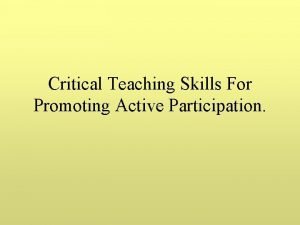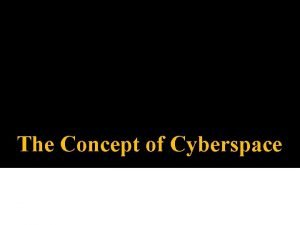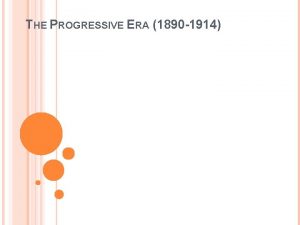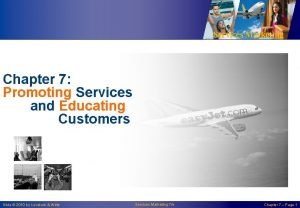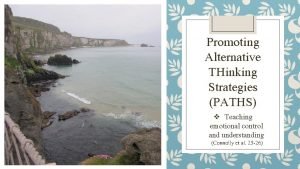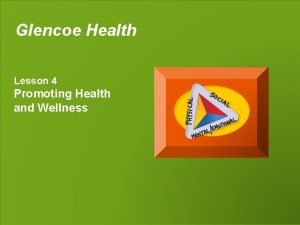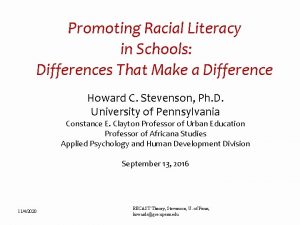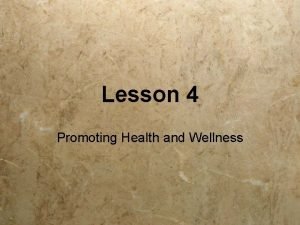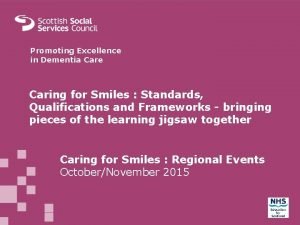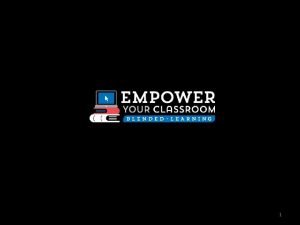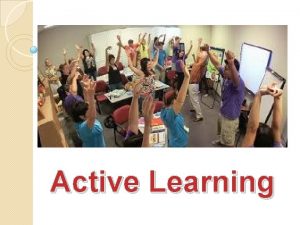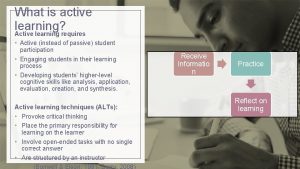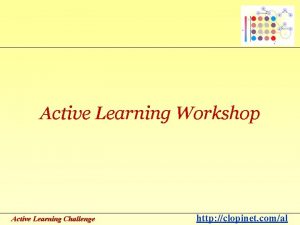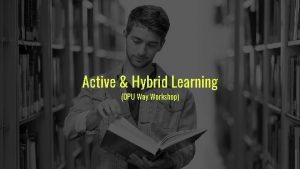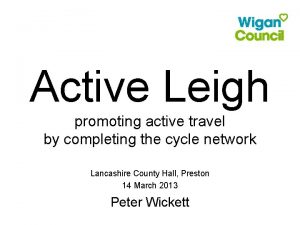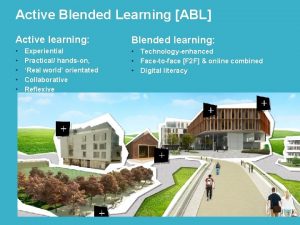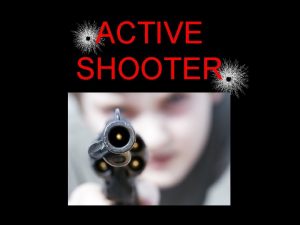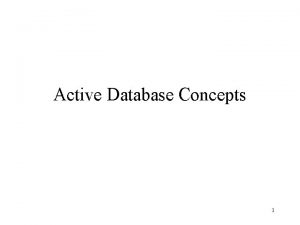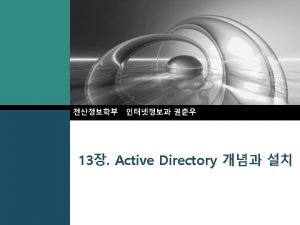Active Learning Initiative Workshop 3 Promoting Active Learning














- Slides: 14

Active Learning Initiative Workshop # 3: Promoting Active Learning Initiative College of Arts & Sciences Fall 2013

Workshop #1: Examining How Students Learn establishing a theoretical background and statistical support for active learning

From Workshop #1: How We Learn • We learn better in groups. • We desire to be active in decisions. • We attempt to connect new knowledge to current and past “real life” experiences. • We benefit from manipulating our environment. • We require multiple modes of communication. • We better retain knowledge from nonthreatening environments. Thurman, L. & Welch, G. (2000). Bodymind & Voice, Foundations of Education

Neuroscience and student learning • Emotion is the gatekeeper of learning • Intelligence is a function of experience • Personal meaning is the key to memory • Teachers influence input; students derive meaning Mc. Geehan J. (2001), Brain Compatible Learning

Workshop #2: Creating Student Learning Outcomes defining clear, measurable goals for course material and student learning

Workshop #2: Learning Outcomes: articulating our expectations From 1. Clearly define the learning outcomes. 2. Select methods to achieve stated learning outcomes. 3. Assess student learning outcomes to verify that results match intentions. Kennedy, Hyland, Ryan (2006) Writing and Using Learning Outcomes: A Practical Guide. Bologna Handbook C 3. 4 -1

Including students in creating outcomes • Are the outcomes clear to students? • How will the students demonstrate competency? • Are lectures/assignments/exams/grading consistent with outcomes?

“Learner-Centered” -- “Active Learning” Fallacies of the “Learner-Centered” Message: --Teachers are self-centered--“teacher-centered” --Lectures are always problematic Intentions of the “Active Learning” Message: --Learning is a shared experience—teacher and student --Learning requires assertiveness among all parties --Learning requires cooperation – MORE WORK

Active Learning: Putting Students to Work • Applying “How We Learn” and SLOs • Moving student roles from “listeners” to “thinkers”—from passive to active • Implementing course strategies to “flip” classroom power structure • Releasing control of the material—from “talking” to “responding”

Principles of Active Learning • • • Prior knowledge affects acquisition Organization of thinking impacts learning Motivation can be cultivated Learning requires repetition and feedback Encouraging self-directed students helps develop critical thinking skills and deeper learning—beyond expediency of exams, etc. Ambrose, Bridges, De. Pietro, Lovett, and Norman (2010) How Learning Works

Mc. Gregor, J. (1990). Collaborative learning: Shared inquiry as a process of reform. In M. D. Svinicki (Ed. ), The changing face of college teaching tips (pp. 19 -30). San Francisco: Jossey-Bass.

Promoting Active Discussions • Think-Pair-Share (short term) – Step 1: Think in response to a specific prompt – Step 2: Pair with neighboring peer to discuss – Step 3: Share collaborative conclusions with class • Buzz Groups (short term) – Discuss course material from specific prompts in groups – Present conclusions to larger group or entire class • Analytical Teams (long term) – Discuss material from specific prompts in groups – Present conclusions to larger group or entire class NOTE: All active work requires specific tasks; shared responsibility; and problem solving tasks

A Sample of Collaborative Assignments • Quiz: adopt Think-Pair-Share approach – Pros and Cons? What is lost? What is gained? • Exam: adopt Analytical Teams to “write” a specified portion of the final exam – Pros and Cons? What is lost? What is gained? • Project: allow collaboration for part or all of major assignments – Pros and Cons? What is lost? What is gained?

Build an Active Assignment Goal: devise and write an effective assignment for eventual implementation by the end of the session 1. Think about your course and the possibilities for inclusion of an active learning activity. Write and Revise 1. Pair with colleague facing similar challenges regarding course context (by discipline, class size, and/or level) 2. Share with peers in full-class discussion
 Promoting active participation
Promoting active participation The cyberspace learning initiative
The cyberspace learning initiative Active campaign workshop
Active campaign workshop When was the progressive era? *
When was the progressive era? * Promoting services and educating customers
Promoting services and educating customers Promoting alternative thinking strategies
Promoting alternative thinking strategies Chapter 1 lesson 4 promoting health and wellness
Chapter 1 lesson 4 promoting health and wellness Promoting family earthquake preparedness
Promoting family earthquake preparedness Lesson 4 promoting health and wellness
Lesson 4 promoting health and wellness Promoting racial literacy in schools
Promoting racial literacy in schools Lesson 4 promoting health and wellness
Lesson 4 promoting health and wellness Philip curry business
Philip curry business Keeping an infant safe and well section 7-3
Keeping an infant safe and well section 7-3 Promoting excellence in dementia care
Promoting excellence in dementia care Deontological ethics
Deontological ethics
